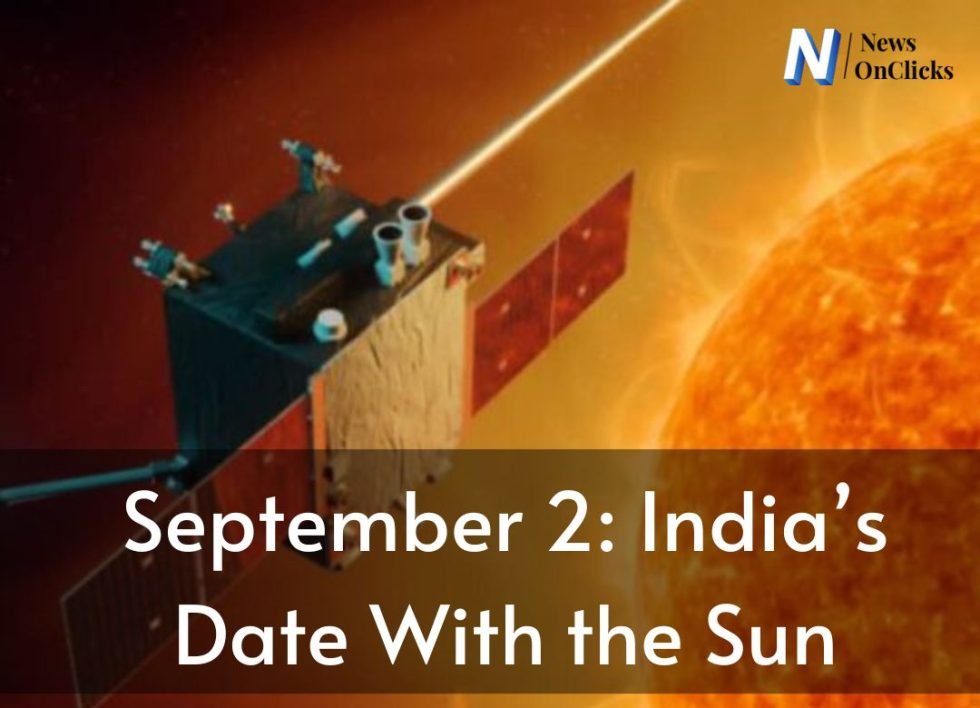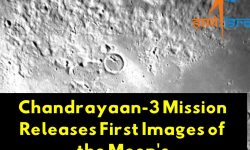
As an avid follower of advancements in space exploration, September 2nd is a date you will want to mark on your calendar. On that day, India’s space agency will launch its Aditya-L1 solar mission from the Satish Dhawan Space Centre. The spacecraft will travel over 1.5 million kilometres from Earth, farther than any previous Indian space mission. Weighing in at nearly 1,500 kilograms, the solar probe will study the sun’s corona and solar wind to gain insights into what heats the corona and accelerates the solar wind. After years of preparation, the ambitious Aditya-L1 mission is ready to launch India into the record books for the farthest reach into space and unlock mysteries of our solar system’s power source, the sun.

India’s Historic Solar Mission Launching September 2nd
India is poised to make history on September 2, 2021 with the launch of its Aditya-L1 solar mission. The ambitious Aditya-L1 spacecraft will study the Sun from an average distance of 1.5 million kilometres, about four times farther than the Moon.
Aditya-L1 carries a payload of instruments for conducting in-situ observations of the solar corona and the solar wind. The mission seeks to expand our understanding of the solar corona and what heats it to extreme temperatures, as well as the mechanisms that accelerate the solar wind. Aditya-L1’s payload includes visible emission line and X-ray spectrometers, a solar wind plasma analyser, a solar wind experiment, and a solar coronagraph.
The spacecraft will provide observations of the photosphere, chromosphere, transition region, and inner corona. It will examine the solar disk and areas around the visible solar disk where solar flares and coronal mass ejections originate. Aditya-L1 aims to gain insights into the solar wind acceleration and understand the ways in which it transports energy and particles into the heliosphere.
India’s Polar Satellite Launch Vehicle (PSLV) will launch Aditya-L1 into a halo orbit around the first Lagrange point 1.5 million kilometres from Earth. The mission is a collaboration between the Indian Space Research Organization (ISRO) and research institutions across India. Aditya-L1 will expand the frontiers of knowledge about the physics behind the origin of solar storms and their impact on space weather and space environments.
The Aditya-L1 mission will usher in a new era of research on the Sun and the solar wind. Its observations and discoveries will uncover clues to long-held mysteries in solar and heliospheres physics. India’s bold venture into solar and space science promises to yield insights with far-reaching consequences.
Destination Sun: The Aditya-L1 Spacecraft’s Journey to 1.5 Million KMS
Journey to the Sun
The Aditya-L1 spacecraft will embark on an ambitious voyage to study the Sun from a close proximity. Launching aboard the Geosynchronous Satellite Launch Vehicle Mark III (GSLV Mk III) from Sriharikota, India on September 2, the spacecraft will travel approximately 1.5 million kilometres from Earth – about four times the distance to the Moon.
The craft’s destination is the first Lagrange point (L1) of the Sun-Earth system, where the gravitational pull of the two large bodies cancels each other out. Aditya-L1 will remain at this stable point to conduct long-term observations of the Sun. The payload includes seven science instruments to examine the solar corona, solar emissions, solar winds, and flares.
Studying the Sun at such proximity will yield insights into several open questions in solar physics and astrophysics. The data and images from Aditya-L1 can uncover the mechanisms heating the solar corona to over a million degrees Celsius and accelerating the solar wind. They may also establish a link between the solar surface, corona and inner heliosphere.
The ambitious Aditya-L1 mission demonstrates India’s technological capabilities in space exploration. If successful, Aditya-L1 will be the first Indian mission to study the Sun from space and the first to reach the L1 point. The insights gained can drive advancements in space weather forecasting to safeguard technology infrastructure on Earth and in space. By decoding the workings of its star, India aims to take a giant leap in understanding the origins of life itself.
Overall, the Aditya-L1 solar mission signifies India’s increasing forays into space science and a growing global presence in solar and space physics. The new knowledge from unravelling the mysteries of the Sun may light up human minds on Earth and beyond.
Major Objectives: Studying the Sun’s Corona and Solar Wind
The ADITYA-L1 mission has two major objectives: studying the Sun’s corona and solar wind.
Corona
The corona is the Sun’s outer atmosphere, extending millions of kilometres into space. Its high temperature of over 1 million degrees Celsius remains an unsolved puzzle in solar physics. ADITYA-L1 will examine the corona’s temperature, density and magnetic field structures to understand how it is heated and what drives its dynamics.
Solar Wind
The solar wind is a stream of charged particles released from the corona that flows through interplanetary space. ADITYA-L1 will explore the solar wind’s properties, characteristics and acceleration to gain insights into its origins and how it varies over the solar cycle. By observing the solar wind in situ for the first time, scientists can directly examine the link between the Sun’s magnetic field and the solar wind.
ADITYA-L1 will provide the following key insights:
- Determine the mechanisms responsible for heating the solar corona to over a million degrees Celsius.
- Trace the flow of energy through the complex solar atmosphere.
- Explore the causes of the solar wind and its variability.
- Advance our understanding of fundamental physical processes common to all astrophysical systems.
- Improve space weather prediction models that can impact technology in space and on Earth.
- The mission’s findings will revolutionize our understanding of the Sun and its impact on space weather. By unlocking the Sun’s mysteries, we can gain insights into basic plasma physics and magnetic reconnection that power the universe. ADITYA-L1 will place India at the forefront of space-based solar studies and benefit global space weather research worldwide.
Payload and Spacecraft Details for the Ambitious Aditya-L1 Mission
As India prepares to launch its ambitious Aditya-L1 solar mission on September 2, it aims to gain critical insights into the Sun and solar atmosphere. The spacecraft will carry a suite of instruments for in-situ observations of the solar corona and solar wind.
Payload and Spacecraft
The 1,475 kg spacecraft will orbit the Sun at a distance of 1.5 million kilometres, approximately four times farther than the Moon. From this vantage point, Aditya-L1’s instruments can observe the solar corona directly without atmospheric distortion and collect data on the solar wind and its acceleration.
The major instrument is the Visible Emission Line Coronagraph (VELC) which will study the diagnostic parameters of the solar corona and dynamics and origin of solar wind. The VELC will provide high angular resolution images of the solar corona at visible and near-infrared wavelengths.
The Solar Ultraviolet Imaging Telescope (SUIT) will image the solar chromosphere and corona in ultraviolet (UV) and Lyman-α emissions. It will provide full disk images of the Sun in UV Continuum and magnetically sensitive spectral lines useful for studying long term solar variability.
The Aditya Solar wind Particle Experiment (ASPEX) in-situ instruments will measure solar wind properties like density, velocity, and temperature to understand solar wind acceleration and coronal heating.
The Plasma Analyzer Package for Aditya (PAPA) will determine the composition of solar wind and provide plasma parameters.
The Solar Low Energy X-ray Spectrometer (SoLEXS) will monitor the X-ray flares for studying the heating of solar corona.
By observing the Sun and the solar wind in-situ, the Aditya-L1 mission will advance our understanding of the heating of the solar corona and acceleration of the solar wind. The insights gained can help scientists better comprehend space weather and its effects on technology in space and on Earth.
Conclusion
In summary, the Aditya-L1 mission will help scientists gain a deeper understanding of the sun and its dynamic behaviour. Its observations and data will provide new insights into the solar atmosphere and the mechanisms that heat it and drive solar wind. By launching the Aditya-L1 spacecraft into its halo orbit around the L1 Lagrange point, India is poised to make seminal contributions to solar and space physics that will benefit researchers around the globe. You can look forward to following this ambitious mission as it seeks to unravel some of the mysteries surrounding our star and expand our knowledge of the solar system. The countdown has begun for India’s date with the sun on September 2.









